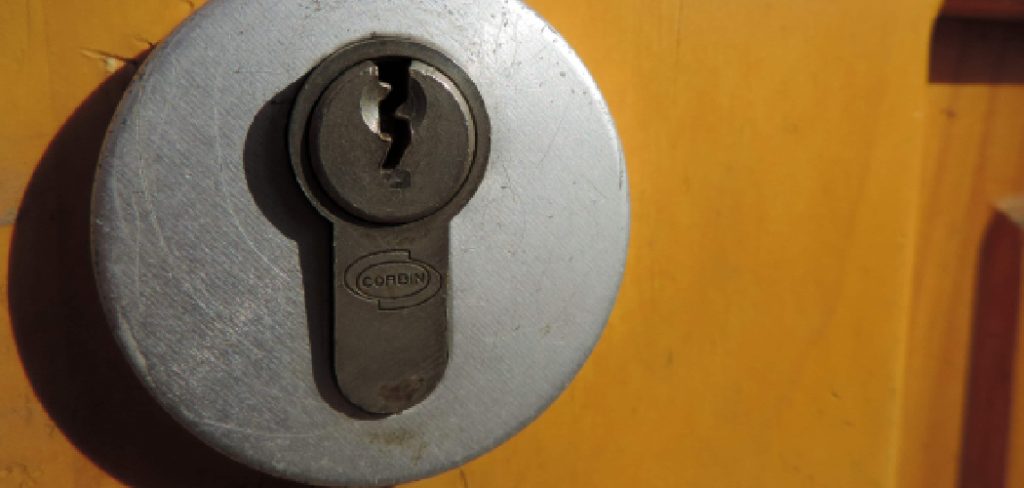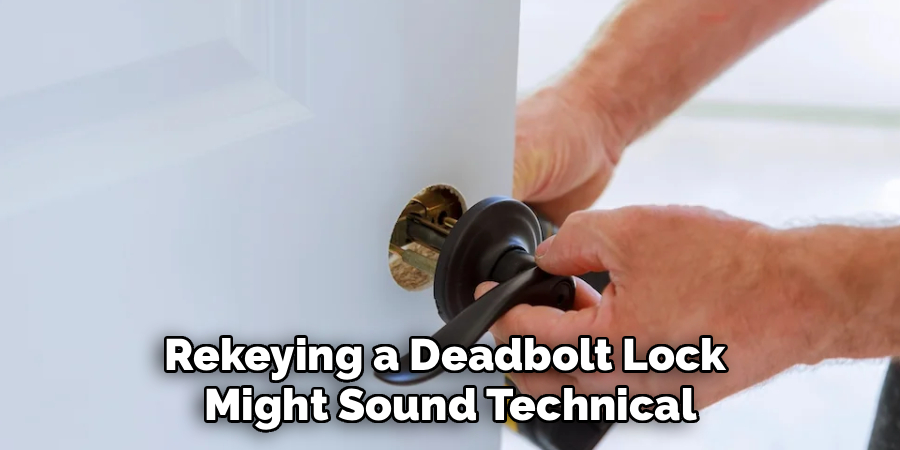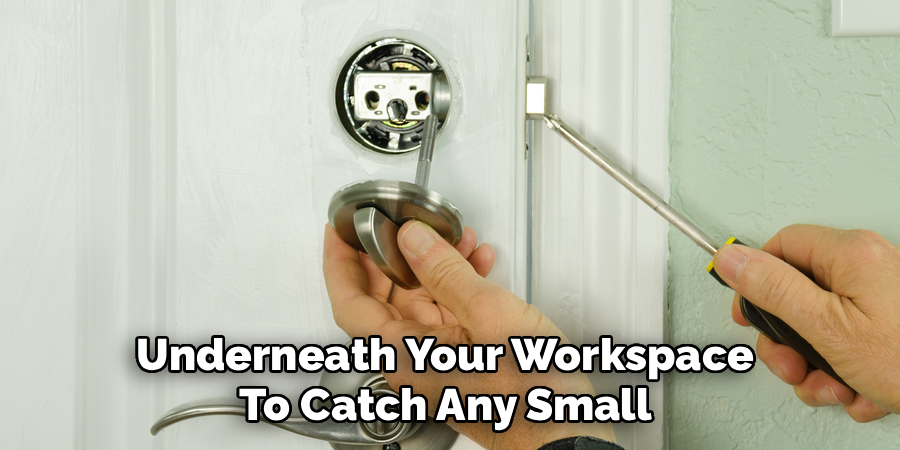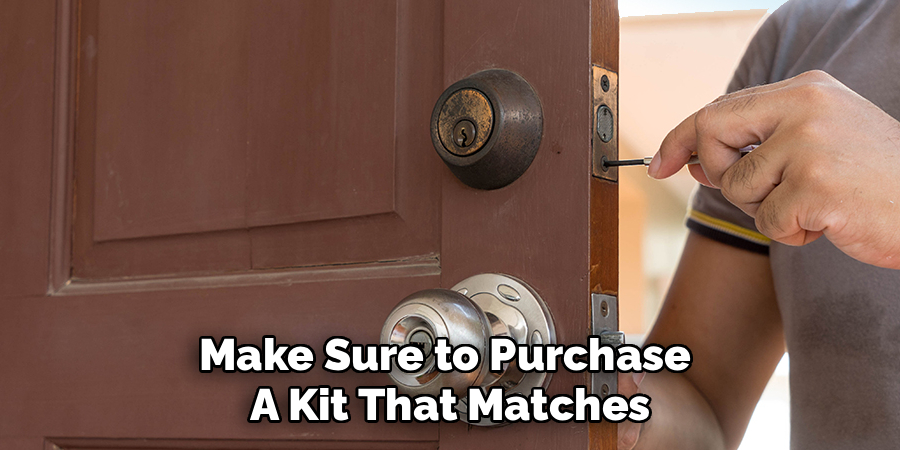How to rekey a deadbolt lock is one of the easiest and most cost-efficient ways to enhance your home’s security. Whether you’ve recently moved into a new house, lost a copy of your key, or just want better control over who has access to your home, this DIY-friendly solution can help you feel more in control. The process involves altering the lock so it works with a new key while rendering old keys useless. With the right tools and guidance, even beginners can master this skill.

The first step in rekeying a deadbolt lock is to gather the necessary tools. Most hardware stores sell rekeying kits that are compatible with various lock brands, making it easier to find the right match for your needs. These kits typically include new keys, pins, and a set of instructions. Before starting, ensure you also have a screwdriver and an appropriate key for the existing lock to remove it from the door. Proper preparation will make the process smoother and save time.
This article will walk you through everything you need to know about rekeying a deadbolt lock, from understanding why it’s essential to a comprehensive step-by-step guide to help you get started.
Why Rekeying a Deadbolt Lock is Important
Rekeying a lock offers an effective way to safeguard your home without the expense of replacing the entire lock system. Here are a few key reasons why this process is so valuable in specific situations:
- Enhanced Security: When you move into a new home or apartment, it’s impossible to know how many copies of the last tenant’s key are floating around. Rekeying ensures only your keys work with the deadbolt.
- Lost or Stolen Keys: Misplacing your keys or dealing with the theft of one can leave your home vulnerable. Rekeying allows you to regain peace of mind by making the old keys obsolete.
- Simplified Key Management: If you have several locks using separate keys, rekeying is a practical way to enable all locks to operate with a single master key.
- Cost-Effective Alternative: Rather than replacing the entire deadbolt system, simply rekeying the lock is cheaper while yielding the same result.
- Tenant Turnover or Breakups: Landlords and renters commonly rekey locks after new tenants move in or when relationships change to maintain security.
The ease and affordability of rekeying make it a smart option for homeowners and renters alike. Now, let’s break down the process step by step.
10 Step-by-Step Guide: How to Rekey a Deadbolt Lock
Rekeying a deadbolt lock might sound technical, but with the right guidance, you can accomplish it quickly and effectively. Follow these steps carefully, and you’ll have a rekeyed lock in no time.

Step 1: Gather Your Tools and Supplies
Before beginning, make sure you have the necessary tools and materials. These usually include a rekeying kit specific to your lock’s brand, a screwdriver, the lock’s current key, and the new keys you want to use. Rekeying kits are available at most hardware stores and often come with detailed instructions, which can help guide you through brand-specific nuances.
Step 2: Remove the Deadbolt from the Door
Start by unscrewing the lock from the door. Locate the screws on the interior side of the deadbolt, which typically hold the lock’s housing in place. Once removed, gently pull the lock apart, making sure to keep track of any small components like springs or pins. Be patient during this step to avoid damaging the lock.
Step 3: Identify the Lock Cylinder
Within the deadbolt assembly, locate the lock cylinder. This is the component that interacts directly with your key. Carefully remove it from the housing using the tools provided in your rekeying kit. Be sure to follow the kit’s instructions when handling the cylinder, as it is a critical piece in the process of rekeying.
Step 4: Insert the Current Key
Take the existing key and insert it into the lock cylinder. This step is necessary to safely remove the plug and access the pins inside the cylinder. Without the current key, you won’t be able to move forward with the rekeying process.
Step 5: Disassemble the Lock Cylinder
Using the follow tool provided in your rekeying kit, push the plug out of the lock cylinder while keeping the pins and springs in place. This step requires a steady hand to ensure no parts fall out. If you’re new to rekeying, consider placing a towel underneath your workspace to catch any small components.

Step 6: Replace the Pins
Achieving the correct key combination is the core of rekeying. Using the new key as a guide, replace the old pins with the new ones provided in your kit. Each pin varies in size and must correspond to the grooves on your new key. Refer to the instructions in your rekeying kit to properly align the pins.
Step 7: Reassemble the Lock Cylinder
Once the pins are securely in place, slide the plug back into the lock cylinder using the follow tool. Double-check for any misaligned pins or springs before securing the cylinder. Once the lock is fully reassembled, test the new key to ensure it operates the deadbolt smoothly.
Step 8: Reattach the Deadbolt to the Door
Carefully place the rekeyed lock cylinder back into the deadbolt housing and screw the lock back onto the door. Ensure the lock is properly aligned before tightening the screws completely. This will ensure smooth operation when engaging or disengaging the deadbolt.
Step 9: Test Your Work
Insert your new key into the rekeyed lock and test its functionality. The deadbolt should turn smoothly without sticking. Test the old key as well—it should no longer work, confirming that the rekeying process was successful.
Step 10: Maintain Your Keys
Now that your lock has been rekeyed, keep your new keys safe. Make spare copies if needed and store them in secure locations to avoid emergencies in the future.
Cost-Saving Benefits
Rekeying your lock is an excellent way to save money compared to replacing the entire lock. Rather than purchasing a new lockset, which can be costly and time-consuming to install, rekeying allows you to retain your existing hardware while achieving the same level of security. This process is particularly beneficial for homeowners or businesses looking to update multiple locks, as the cost of rekeying multiple locks is typically much lower than replacing them entirely. Additionally, by learning to rekey locks yourself, you can save on professional locksmith fees, making it an even more budget-friendly option.

Rekeying locks also provides an added layer of security by preventing potential intruders from using lost or stolen keys to gain access to your property. This is because rekeying involves changing the internal pins and springs within a lock, making any previous keys obsolete. By regularly rekeying your locks, you can ensure that only authorized individuals have access to your property.
In addition to providing convenience and cost savings, rekeying locks can also be a great opportunity for customization. You can choose to have all your locks keyed alike, meaning they will all use the same key for easy access. Alternatively, you can opt for different key combinations for different areas of your home or business, giving you
Frequently Asked Questions (FAQs)
1. Can I rekey a deadbolt lock myself without professional help?
Yes, rekeying a lock is a DIY-friendly process, especially if you use a rekeying kit specific to your lock’s brand. These kits provide all the necessary tools and instructions to complete the task. However, if you are uncomfortable working with small pieces or lack the tools, consulting a locksmith might be a better option.
2. How long does it take to rekey a deadbolt lock?
For beginners, the process can take approximately 30 to 60 minutes. Once you’re familiar with the steps, future rekeying projects may take even less time. Patience and attention to detail are key factors in ensuring a successful outcome.
3. How much does it cost to rekey a deadbolt lock?
On average, a DIY rekeying kit costs between $10 and $25. This makes it more affordable than hiring a locksmith, who may charge around $75 to $150 per lock. With the right tools, you can rekey multiple locks using one kit.
4. What’s the difference between rekeying and replacing a lock?
Rekeying alters the lock’s internal pins to work with a new key, while replacing involves installing an entirely new lock. Rekeying is more cost-effective, but replacing is necessary if the lock is damaged or outdated.
5. Do all brands of rekeying kits work universally?
No, rekeying kits are typically brand-specific. Make sure to purchase a kit that matches the brand of your deadbolt lock (e.g., Kwikset, Schlage) to avoid compatibility issues.

Conclusion
Rekeying a deadbolt lock is an essential skill that empowers you to control access to your home without the expense of a locksmith. By following the step-by-step guide outlined above, you can confidently tackle this project and ensure that your locks work seamlessly with your new keys. Remember to always prioritize safety, and never hesitate to seek professional help if you encounter any difficulties. With the right tools and techniques, you can easily rekey your deadbolt locks and safeguard your home and loved ones. Happy DIY-ing!
Additionally, keeping your tools organized and maintaining a clean workspace can significantly impact the success of your project. Proper preparation not only ensures efficiency but also minimizes the risk of errors during the rekeying process. Take the time to double-check your work and test the lock thoroughly before considering the job complete. Patience and attention to detail are key elements that contribute to a smooth and effective DIY experience.
or simplifying your key management, knowing how to rekey a deadbolt lock is an invaluable tool for homeowners and renters alike. With just a bit of time and effort, you’ll achieve peace of mind knowing your home is safe and secure.
About
Safety Fic is a distinguished figure in the world of Diy design, with a decade of expertise creating innovative and sustainable Diy solutions. His professional focus lies in merging traditional craftsmanship with modern manufacturing techniques, fostering designs that are both practical and environmentally conscious. As the author of diy, Safety Fic delves into the art and science of Safety Fic-making, inspiring artisans and industry professionals alike.
Education RMIT University
(Melbourne, Australia) Associate Degree in Design (Safety Fic) Focus on sustainable design, industry-driven projects, and practical craftsmanship. Gained hands-on experience with traditional and digital manufacturing tools, such as CAD and CNC software.
Nottingham Trent University
(United Kingdom) Bachelor’s in diyfastly.com and Product Design (Honors) Specialized in product design with a focus on blending creativity with production techniques. Participated in industry projects, working with companies like John Lewis and Vitsoe to gain real-world insights.
Publications and Impact
In diy, Safety Fic his insights on indoor design processes, materials, and strategies for efficient production. His writing bridges the gap between artisan knowledge and modern industry needs, making it a must-read for both budding designers and seasoned professionals.
